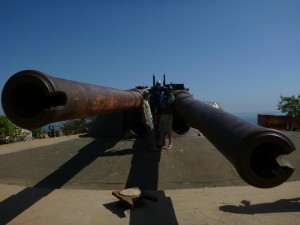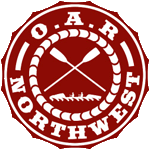
December 7 — Get up to surf. Eat a quick breakfast. From the Surf camp come Nejma from Nice, Cole from Adelaide and Conner from Dublin. Today we go to Gorée Island.
Traffic through Dakar on this Friday is atrocious, but the novelty of being in Africa, Senegal, and Dakar has not quite worn off. Vibrant murals cover many building and along the side of roads. We almost miss the ferry, jumping on at the last moment. People here are almost all neatly dressed, the men quite sharp and the women in magnificent colored fabrics.
We are rushed by tour guides on arrival but they start arguing among themselves. We leave them to it and head to the Slave House-the main historical attraction and point of pilgrimage for many. Gorée Island is a UNESCO World Heritage Site for its significance in how the Atlantic Slave trade is remembered.

Although only one of many spots where the slave trading was conducted in West Africa, the “Slave House” has come to symbolize this horrible transatlantic trade. It is painted pink, cheerful until it becomes clear the dark storage rooms beneath the second story was for humans. This was just one of the many houses on the street used for such purpose. Its not that big and after a half hour wandering the cells we leave in a thoughtful, but not quite somber mood and head for the main square.
We walk past two French tourists taking pictures of three young girls who pose and laugh for the camera underneath the shade of a huge tan colored baobab tree. Conner tells me both Christians and Muslims come to pray to the tree for water. Apparently the baobab is quite sensitive and will retain an incredible volume of water water within its trunk. When it senses that it will rain it will allow the water to flow to its branches and leaves will sprout before the rain actually comes.
 Apparently there is a castle on the hill on the other side of the island. Through the square is a nice soccer field. The switchbacks are wide and cobbled with artists on either side. We walk up a set of stairs to a dark concrete room. It looks ruined, but the walls are filled with art and a few beds. Through a hallway is some light and a massive, round, rusted-out contraption. A rusty ladder leads up to the sun. We climb. Its a gun. A huge double-barrel naval gun circa some time between world war one and two. Sometime in 1940 the Vichy government fired the gun at a British ship. This was the only time in was fired in belligerence. The tropical climate has begun to break apart the cement and the dilapidated gun has become storage for goats, houses and ever-present artwork.
Apparently there is a castle on the hill on the other side of the island. Through the square is a nice soccer field. The switchbacks are wide and cobbled with artists on either side. We walk up a set of stairs to a dark concrete room. It looks ruined, but the walls are filled with art and a few beds. Through a hallway is some light and a massive, round, rusted-out contraption. A rusty ladder leads up to the sun. We climb. Its a gun. A huge double-barrel naval gun circa some time between world war one and two. Sometime in 1940 the Vichy government fired the gun at a British ship. This was the only time in was fired in belligerence. The tropical climate has begun to break apart the cement and the dilapidated gun has become storage for goats, houses and ever-present artwork.
We had a beer overlooking the Atlantic. Ferry, and wandered into Club Peshce a restaurant and bar affiliated with a group of sport fishing boats about the size of ours. Malcome, from IAMGOLD, has been in Dakar over thirty years and suggested that this would be a place to make the right contacts to help with some of our boat logistics. We are there a bit early and only one of the tables is filled. Markus and Cole go out to hit an ATM and find a wireless Internet stick. Nejma, Pat and Conner order drinks while I wander around the dock seawall looking for any equipment that could be of help. Unfortunately, their crane is too small and the ramp is enclosed. Its primary use being the rails that drop into the water and pull out boats to temporarily be worked on. Apparently these boats are launched somewhere else. In spite of Nejma’s french and the lack of diverse clientele, at five in the afternoon we don’t find any particularly useful information. Markus and Cole come back, flush with money but too late with the wireless Internet stick.
Dakar traffic has seemingly gotten worse by the time we leave and after a 40 minute trip through congested highways and some dirt roads, we make it to our beach and the oasis of N’Gor Island.
